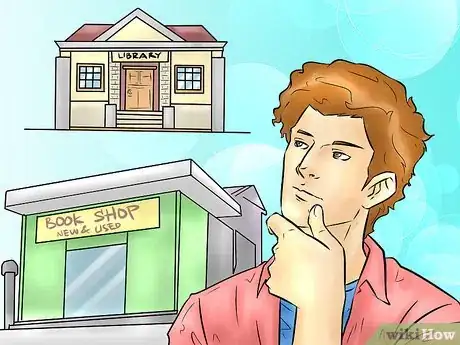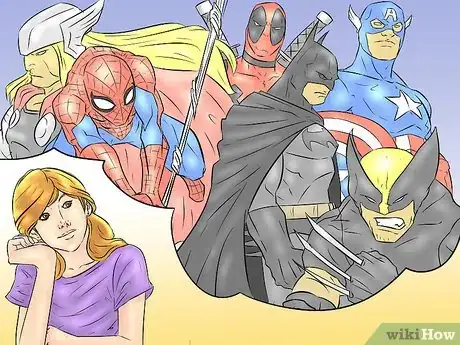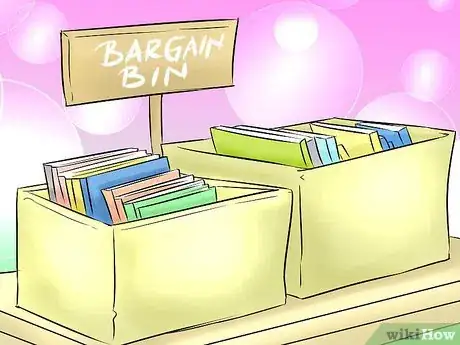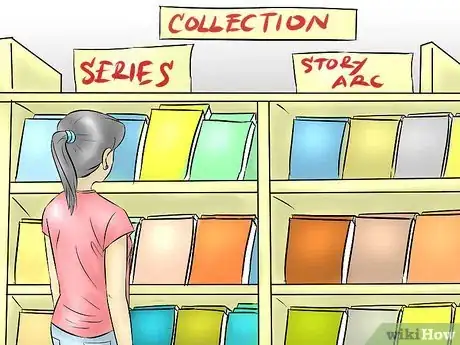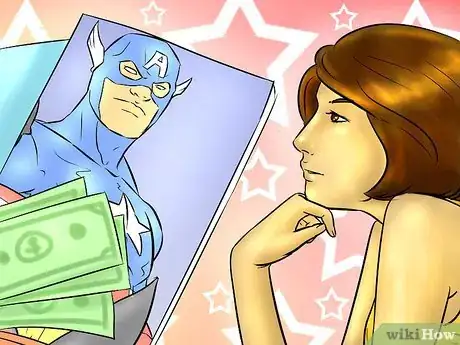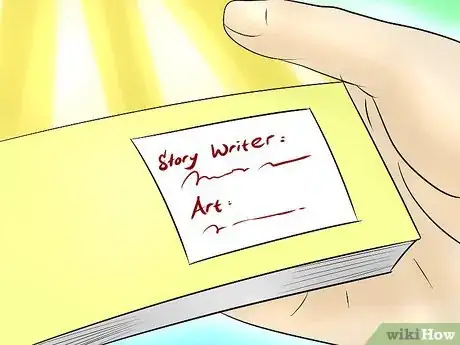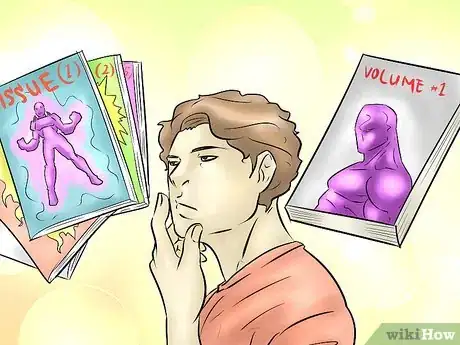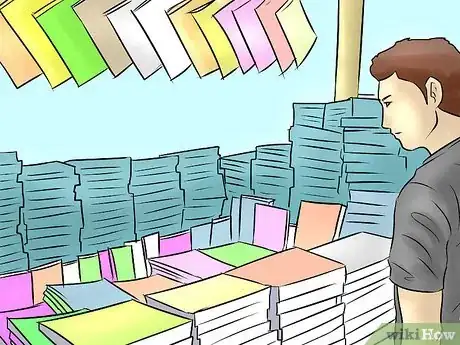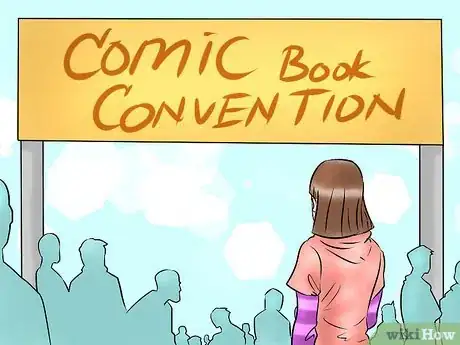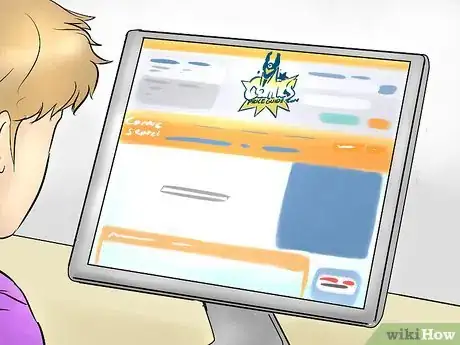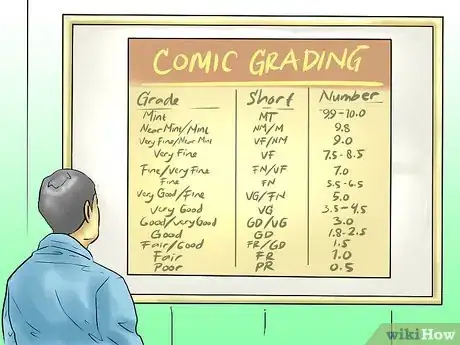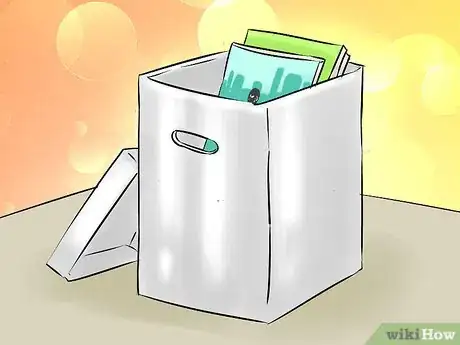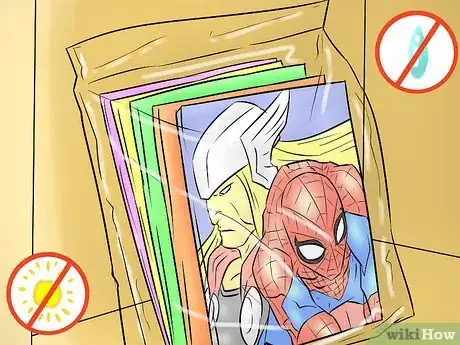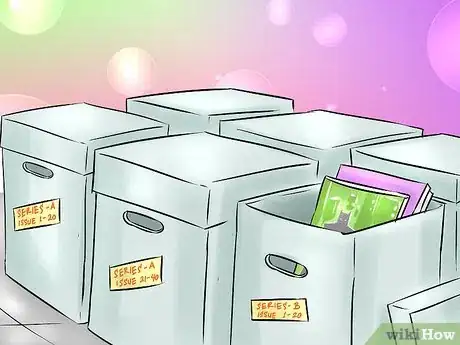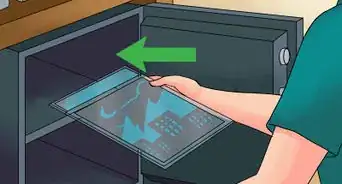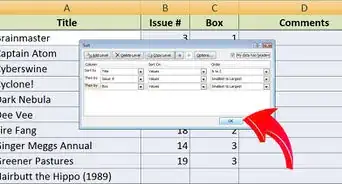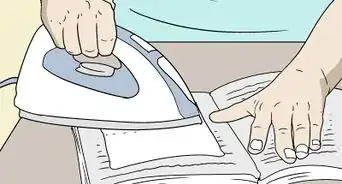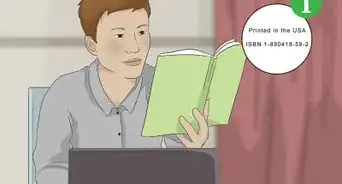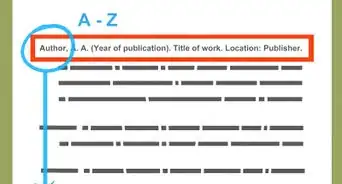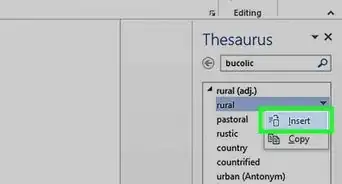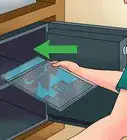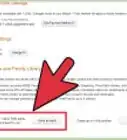X
wikiHow is a “wiki,” similar to Wikipedia, which means that many of our articles are co-written by multiple authors. To create this article, 15 people, some anonymous, worked to edit and improve it over time.
This article has been viewed 54,211 times.
Learn more...
With the wide selection of comics available, it can be hard to find a starting point on your own. Comic-reading friends and comic book store employees often love to talk about their hobby, so they can be a great source of advice for a beginner. Even just browsing the shelves of a used book store can help you narrow in on the comics you enjoy, and methodically build a collection.
Steps
Method 1
Method 1 of 3:
Buying Your First Comics
-
1Find a comic book store. A dedicated comics store is the best place to start a collection, since there will be a large selection available, and store employees that can give you advice.
-
2Locate other major sources. If there is no comic book store in your area, try to find another area with a sizable collection. Libraries won't let you build your collection, but they can be a good place to find out which comics you enjoy before spending any money. Book stores, especially ones that sell used books, often have good starter material as well.
- As a last resort, you can try purchasing online because the internet has the largest selection out of anywhere plus you don't have to leave your house.
Advertisement -
3Consider a mainstream superhero comic. If you are interested in trying out superhero comics, you might want to start with one of the DC or Marvel characters that you're already familiar with from popular culture.
- Spiderman is a good introduction to the genre, while Batman is another extremely popular comic with darker themes.
- For plenty of humor and action, try Captain America or Thor.
- For a more complex approach, follow the large hero team X-Men, or read about the antihero Deadpool for his fourth-wall-breaking gallows humor.
-
4Try out a different genre. There are many other genres of comic books, but the selection may vary from store to store. Ask advice from a comic-reading friend or a comic store employee, or follow the suggestions below:
- The graphic novels Watchmen and V for Vendetta, along with the Sandman series, are popular examples of comics that address more adult, intellectual themes using superhero tropes.
- Japanese manga includes many sub-genres. Try this introductory guide.
- Browse the store's independent publisher section or graphic novel selection to find a wide array of artistic and writing styles.
-
5Dive into the bargain bin. If you truly can't decide where to begin, find the bargain bin and start buying stacks of comics for a dollar or less each. You probably won't find popular or valuable comics this way, but you may find hidden gems that spark your interest in a series.
-
6Start with the beginning of a story arc. There's no need to start with issue 1 if the series has been going on for years. Typically, a story arch lasts for roughly 10–20 issues, and introduces you to several comics and characters. Not all story arcs are easy for beginners to jump into, so asking a store employee or comic-reading friend for advice is the best way to find a good starting point.
-
7Collect comics in the same series or story arc. Once you've found a comic book you like, there are a couple of natural ways to progress your collection. A comic book series is defined by the name on the cover. If you like The New Avengers issue 25, chances are you'll also enjoy other The New Avengers issues as well. To catch a glimpse at a larger story involving characters you might not be aware of, read a story arc instead. These are "crossover events" that involve more than one series. These can vary widely in how many series are involved and how long they last. Here are two extreme examples to show the range, one of a very short story arc to track down and one that could be a significant collection challenge on its own:
- The New Avengers/Transformers story arc lasted only four issues and was published as a separate, temporary series involving only characters from those two franchises.
- The Batman: Knightfall story arc took over a year to complete, and was published in staggered order throughout the series Batman, Detective Comics, Shadow of the Bat, and several other Batman-related comics.[1]
-
8Follow a character or universe. The most popular comic book characters are major protagonists in several series running at the same time and typically exist in the same "universe" as other characters and comic book series. For example, if you're a fan of Wonder Woman, she's recently starred in the series Wonder Woman, Justice League, Superman/Wonder Woman, Smallville, and Injustice: Gods Among Us.[2] To learn more about the world and other characters in it, you can read many more comics set in the DC universe, such as the many series that involve Batman, Superman, The Green Lantern, and others.
- The largest comic book universes can be complicated, as most of them have been relaunched several times with changed features. Sometimes, the same character may exist side by side in different, but similar universes, or a "What if?" issue may show a hypothetical story that doesn't have an impact on other comics.
Advertisement
Method 2
Method 2 of 3:
Building Your Collection
-
1Take it slowly. Try to pace yourself, and start by purchasing comic books in just one or two series at a time. Decide on a monthly budget and focus on your favorite comics, or you may find yourself running out of money and storage space long before you have the collection you're looking for.
-
2Notice the names of writers and artists. As you read your first few comic book stories, you'll be exposed to several writers and many art styles. When you find a favorite, turn back to the beginning of the issue and write down the author or artist name. Track down other issues written or illustrated by the same person to expose yourself to stories you wouldn't normally find.
- Neil Gaiman, Alan Moore, Bill Willingham, Warren Ellis, and Mark Millar are all well-known comic authors.
-
3Decide what format to buy comics in. Most mainstream comic books are first released in short installments called issues, about 10–20 pages long. If you are willing to wait, you can often save money by purchasing a trade paperback containing five or so issues in one volume, or a graphic novel containing a complete story arc. Paperbacks and graphic novels are also easier to store than single issues, if you already have a bookshelf.
- Some independent artists only publish as a graphic novel.
- You may also check the inside cover of a comic book for subscription information, and sign up to receive the comic in the mail.
-
4Hunt for comics in obscure places. Once you have started a comic collection, you may enjoy hunting for older or less popular comics. Visit flea markets, garage sales, thrift stores, and antique shops to see what's available. They are often fantastic places to get a deal!
-
5Befriend other collectors. Meet other comic book collectors browsing shelves at the comic book store. Trade comic books with them, or loan and borrow books so you can read a comic before deciding whether to purchase it for your collection.
-
6Attend comic book conventions. There are many comic book conventions that draw thousands of fans to meet the people who create comics, find deals on new or rare comics, or hear announcements about upcoming comics. The most famous is Comic-Con, held in San Diego each year.
-
7Look for individual comics online. Search on Amazon, eBay, and other retail sites for specific comics that will round out your collection of a series. Always look up the seller's ratings and reviews before purchasing, and search for past sales of the same issue to tell whether you are getting a good deal.
- If you cannot find past sales history on an item, try looking up the comic's price at ComicsPriceGuide.
-
8Know the quality grading system. Individual comic books are graded for quality to describe the condition the comic has been preserved in. A rating of 0.5 (Poor) means there are pages or part of the cover missing, or that the comic has been heavily damaged by spilled substances. A rating of 10.0 (Gem Mint) means the comic is in perfect condition, with no blemishes. Comic books with a higher quality grade are much more valuable.
-
9Search for landmark issues. The truly valuable comics can be worth hundreds or thousands of dollars, and form the centerpiece of a collection. While older comics are worth more in general, the most valuable ones involve a landmark event in a popular series. Here are a few types of landmark events (along with examples from The Amazing Spiderman):
- The first issue of the series (e.g. The Amazing Spiderman issue 1).
- The first appearance of a major character (e.g. The Green Goblin in issue 14).
- The death of a major character (e.g. issue 121).
- The first appearance of a popular object or new look (e.g. the symbiote suit aka black costume in issue 252).
Advertisement
Method 3
Method 3 of 3:
Storing Your Comic Book Collection
-
1Keep comics in an archival comic book long boxes. They are available at most comic book stores or online. A comic bookbinder with clear plastic sleeves will help prevent folding and tearing when comic books are kept on a bookshelf or in a box. However, a binder is not ideal because storing the comics flat instead of standing up over time can create a spine roll which hurts the condition of the comic book. Using a filing cabinet is another option.
- Paperback and hardback collections can be stored on a bookshelf as usual.
-
2Protect comics from heat and moisture. Store your comics in a dry area at room temperature. Keep them away from direct sunlight. If they are kept in a storage area instead of on the shelf, keep them in plastic bags to minimize water damage.
-
3Organize your collection. Keep issues from the same series together, and order them by issue number. Use folder dividers to separate series kept on the same shelf or in the same container.
-
4Protect valuable comics. Purchase plastic slips to further protect your most valuable issues. Keep these in a secure place in a designated area of your comic collection, so you can easily locate them. When handling them, wear latex gloves to prevent leaving traces of skin oil on the pages.
Advertisement
Warnings
- Don't rely on your comic book collection to pay for itself. Many comics never become valuable, and few people ever manage to strike it rich by finding a lucky deal because many issues especially from the 70s to the present are common.⧼thumbs_response⧽
- At this point in time, it's unlikely that anyone will accidentally come across a rare, valuable comic. There is almost no chance of swindling an unsuspecting seller of a famous edition. Anyone dealing in collectibles or commodities will have made it a point to be informed on comic book worth, even if they aren't particularly comic book fans.⧼thumbs_response⧽
- Prevailing wisdom is that all of the surviving copies of those rare, valuable seminal issues have already been accounted for and that any more that might have been (or will be) found will have been rejected as worthless due to poor condition. There are, however, many notable books to collect from more recent years that you might pay only a little more than the original cover price most especially in bargain bins for anywhere from a quarter to a few bucks.⧼thumbs_response⧽
Advertisement
References
About This Article
Advertisement

